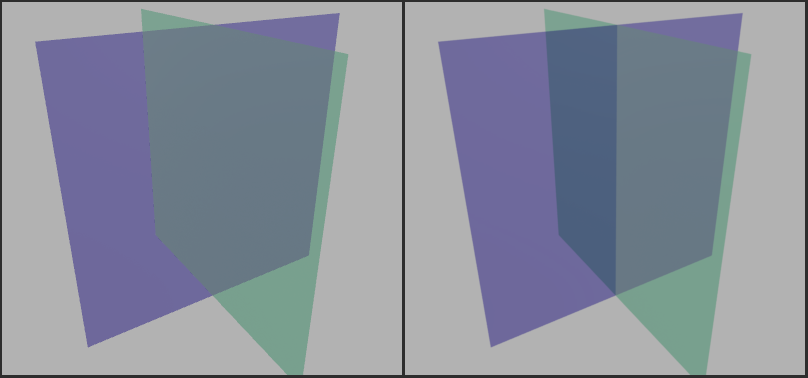Standard versus Enhanced Transparency
This technique for calculating transparency can be costly. In order to improve the rendering of transparency without resorting to enhanced transparency, avoid grouping transparent surfaces together in Shaper. A group is treated as a single surface, which can prevent Patchwork 3D from correctly analyzing which geometric elements should be visible through a transparent surface.
Standard Transparency | Enhanced Transparency | |
|---|---|---|
Affected materials |
|
|
Calculation method | Handled surface-by-surface, using the position of the bounding box to determine the order of surfaces from a given point of view. | Handled pixel-by-pixel, analyzing all of the surfaces present at each pixel from a given point of view. |
Advantages | Renders quickly and is suited to most uses of transparency. | Prevents situations where the position of the bounding box is not enough to determine the order of surfaces from the point of view. This can occur with complex transparent surfaces, intersecting transparent surfaces, transparent surfaces that surround other surfaces... |

Intersecting transparent surfaces rendered with standard transparency (left) and enhanced transparency (right).